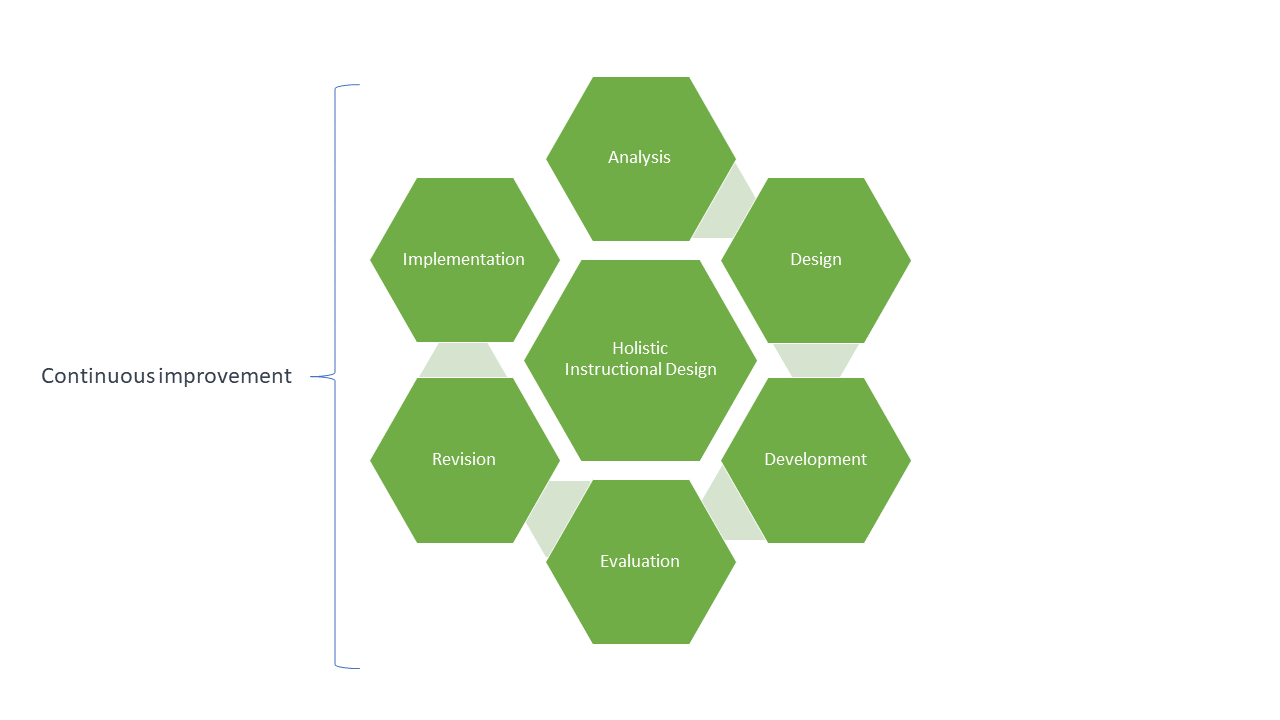The Importance of Holistic Instructional Design in eLearning

In recent years, eLearning has become an increasingly popular method of delivering education and training. However, simply digitising traditional classroom instruction is not enough to guarantee effective and engaging eLearning content. This is where the concept of holistic instructional design comes in.
Holistic instructional design is an approach to creating eLearning that takes into account the whole learner. It is not just about delivering information, but also about designing experiences that engage learners and promote understanding and retention of the material. By using a holistic approach, instructional designers can create eLearning that is not only effective, but also engaging and enjoyable for learners.
One of the key principles of holistic instructional design is that it is learner-centred. This means that the design process is focused on the needs, goals, and preferences of the learners. Rather than a one-size-fits-all approach, holistic instructional design recognises that different learners have different learning styles and preferences, and that eLearning should be tailored to meet these individual needs. This can be achieved through the use of different types of media, such as text, images, video, and audio, as well as through the use of interactive activities and simulations that engage learners in the material.
Another important principle of holistic instructional design is that it is based on sound instructional design theory. This means that the design process is grounded in research on how people learn, and that it is based on established instructional design models, such as ADDIE or SAM. By using these models, instructional designers can ensure that their eLearning is both effective and efficient, and that it is based on a thorough analysis of the learning objectives, audience, and context.
One of the key benefits of holistic instructional design is that it leads to better learning outcomes. By using a learner-centred approach, instructional designers can create eLearning that is more engaging and enjoyable for learners, which in turn increases motivation and retention of the material. By using established instructional design models, instructional designers can ensure that their eLearning is effective and efficient, which results in higher levels of understanding and retention of the material.
Another benefit of holistic instructional design is that it leads to more cost-effective eLearning. By using a learner-centred approach, instructional designers can create eLearning that is tailored to the needs of the learners, which can reduce the need for additional resources, such as support materials or additional training. Additionally, by using established instructional design models, instructional designers can ensure that their eLearning is efficient, which can reduce development costs.
In conclusion, holistic instructional design is an essential approach to creating effective and engaging eLearning content. By taking into account the whole learner and using sound instructional design theory, instructional designers can create eLearning that is not only effective, but also engaging and enjoyable for learners. This leads to better learning outcomes and more cost-effective eLearning. As eLearning continues to grow in popularity, it is important for instructional designers to adopt a holistic approach to their design process, in order to ensure that eLearning is not just an alternative to traditional classroom instruction, but a truly effective and engaging method of delivering education and training.


